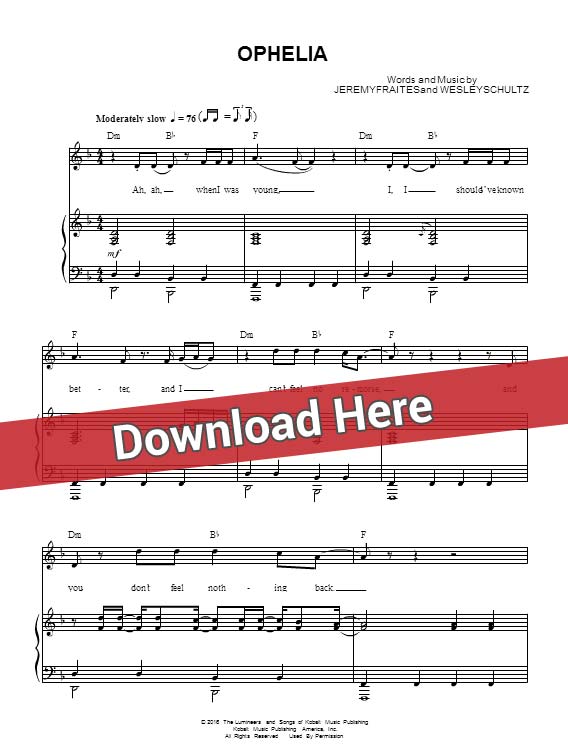


- Sheepshaver sheet music mac os x#
- Sheepshaver sheet music install#
- Sheepshaver sheet music update#
- Sheepshaver sheet music full#
You can play with the graphics/sound tab to find the settings that fit you – I have MacOS 9 running in a 1024×768 window.
Sheepshaver sheet music update#
Note that if you used the solution detailed in the update above, you can discard this warning.
Sheepshaver sheet music full#
This directory will be mounted as a drive inside the virtual environment, and since SheepShaver runs as root, it will have full read/write access to this directory and all subdirectories. It is important to set the “UNIX root” field to a safe directory, like your home directory or a specially created share directory.
Sheepshaver sheet music install#
Since you first need to install MacOS 9, insert your MacOS 9.0.4 disk, enable the CD-ROM driver, and set the “Boot from” drop-down to “CD-ROM”. Now it’s time to correctly set everything up. You obviously need to tell SheepShaver where to store this file I stored mine on my free-for-all Data partition, and called it MacOS. I know from experience that this operating system requires very little hard drive space, so I went with 2GB. The steps to set up this environment will look remarkably familiar to anyone with experience in running virtual machines.įirst, we need to create an image file to act as a hard drive for MacOS 9. Now you can run SheepShaver without root privileges.Īfter launching SheepShaver (I simply use a terminal to execute sudo SheepShaver), you’ll be confronted with the settings window which also happens to act as the launcher for your MacOS 9 environment. Edit your /etc/nf, and add vm.mmap_min_addr = 0. Update: Thanks to OSNews reader nalf38, there’s a solution. I’m sure there’s a more clever way to work around this problem, but I haven’t really looked into this yet. In other words, be careful, and don’t run it on a production machine – your SheepShaver environment has root access. Before we start, on my machine, SheepShaver had to be run as root, or else I’d get a “Cannot map Low Memory Globals: Operation not permitted” error. Once you have all these, it’s pretty darn easy to get going. You can find these ROMs online too, but again, that is most likely illegal.

Again, I’m lucky in that I have two of these, so I didn’t have to jump through a lot of hoops. The third thing you’ll need is a little trickier to come by: you’re going to need the ROM image of a new world Mac, like a PowerMac G4. Of course, there’s always the option of going the way of the pirate, but this is most likely illegal in your country of residence. Believe it or not, genuine and new copies of MacOS 9 can still be found in online stores today, but even if you can’t find one online, your local Apple retailer might still have a few copies lying around (at least, that’s how I got two free copies). Since I have two Macs capable of running classic versions, that was no problem for me. Of course, you’ll also need a copy of MacOS 9.0.4. I used the 64bit build found here, and it works fine on Ubuntu Lucid Lynx.
Sheepshaver sheet music mac os x#
You can build it yourself, or grab a binary binaries for Windows and Mac OS X are easy to get, but for Ubuntu, you’ll have to try a little harder. You’ll need a few things before you can get going. Even though SheepShaver can run earlier versions, I’m focussing on MacOS 9.0.4. As of late, development has been focussed on Windows and Mac OS X, but pre-built Debian packages have appeared for 64bit and 32bit Ubuntu installations too. SheepShaver is basically a PowerPC emulator that fakes an entire PowerPC-based Macintosh in software so that you can run MacOS 7.5.2 through 9.0.4 on Windows, Mac OS X, Linux, and BeOS. I decided to try SheepShaver on my Ubuntu machine, and discovered just how easy it really is. This environment has been dropped from Intel releases of Mac OS X, but thanks to SheepShaver, you can still set it up yourself on Mac OS X, Linux, Windows, and even BeOS if you want to. Remember MacOS 9, or Classic as Apple named it once Mac OS X was released? On PowerPC Macintosh machines, you can install a Classic environment which launches a virtualised instance of MacOS 9 whenever you launch a Classic application.


 0 kommentar(er)
0 kommentar(er)
